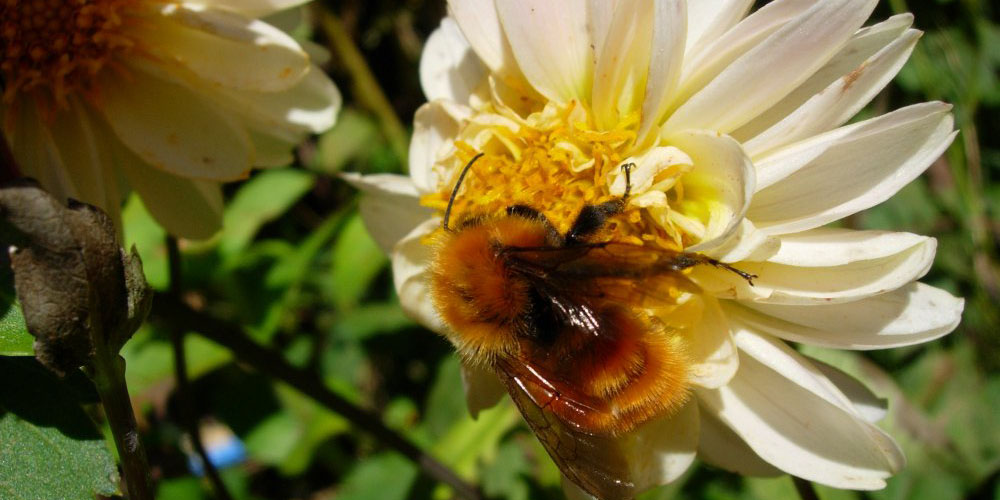Solitary bees contribute more than double the economic benefit of apple pollination than honeybees. This is the output of a study in the UK. For studying the contribution of different pollinators to apple yield, they asked three questions:
- how good do different flower visitors pollinate a flower?
- how often do the diverse groups visit apple flowers?
- how much do apple varieties depend on pollination?
To anwer these questions, the scientist studied the four most common apple varieties in UK and combined different methods. By this, they could quantify economic gain different pollinators are responsible for. It turned out that hoverflies are the less effective pollinator group, contributing 0.7 million £ to the economic output. Solitary bees, on the other hand, contribute 51.4 million £. They are followed by honeybees (21.4 million £) and bumblebees (19.6 million £). The total benefit of apple pollination in UK was 92.1 million £. Wild pollinators, therefore, contribute more than 75% of the value of pollination services. Managed honeybees, on the other hand, provide a smaller portion to these services. Non-managed pollinators pollinate more efficiently and visit flowers more often than honeybees.
These findings have consequences for proper pollination management. Usually, beekeepers bring honey bee colonies to apple orchards for pollination. Providing habitat for wild pollinators could have a higher benefit for apple growers. Though such measures are time-consuming, in the long run, the profit by effective pollination may overtop the costs. This applies especially to a perennial and highly pollinator-dependent crop like apples.



